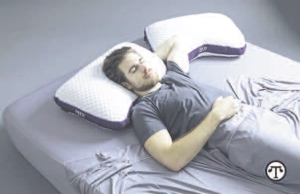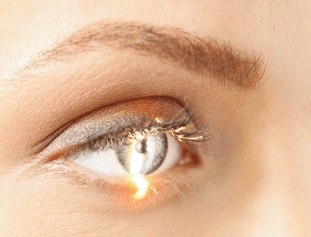FOR YOUR HEALTH: Three Cool Ideas For A Better Night’s Rest
(NAPSI)—The next time you find yourself kicking your leg out of the side of your blankets to cool off or turning your pillow over because it’s too hot—you won’t be alone. Some 50 million Americans are affected by intermittent sleep problems, potentially created by bedding choices, according to the National Sleep Foundation—but you don’t have to be.
 Not many people realize it, but surrounding yourself with breathable fabrics while you sleep is essential for a restful night. Airflow matters because it lets heat naturally dissipate away from your body and helps keep your temperature regulated. Overheating can lead to a night of tossing and turning, leaving you groggy the next day because you didn’t recover properly the night before.
Not many people realize it, but surrounding yourself with breathable fabrics while you sleep is essential for a restful night. Airflow matters because it lets heat naturally dissipate away from your body and helps keep your temperature regulated. Overheating can lead to a night of tossing and turning, leaving you groggy the next day because you didn’t recover properly the night before.
What To Do
So what’s the solution? It’s possible to get more out of each day by enhancing your sleep environment. There are options that can cater to your individual sleep position, body frame and temperature to help you maximize recovery at night.
Consider these facts and tips for a better night’s sleep:
- There are 24 vertebrae in your back, eight of which are supported by a pillow and the rest by your mattress. Therefore, while you’re sleeping, 30 percent of your comfort comes from your pillow and 70 percent comes from your mattress. This is why it’s important to have the right fit of sleep equipment that supports your body’s needs.
- Get personalized. It’s true that one size doesn’t fit all—especially when it comes to your bedding. You might want to check out Bedgear, which offers a personalized Performance Sleep System and a Pillow ID fitting process, used by professional sports teams such as the Boston Celtics and Dallas Mavericks. The process is designed to fit people with individualized products for the best sleep every night.
- Spend the last hour before bed away from electronics. Taking some time to relax and unwind calms your body and helps your brain transition more easily into deep sleep. At the same time, you’re removing artificial sources of the blue light found in electronic devices that activates your brain to stay awake and can disrupt sleep.
Personalization, coupled with fabric technologies that are engineered to promote airflow and assist with temperature regulation, can ensure that your sleep environment is optimized for the best rest.
Learn More
For further information on how to upgrade your sleep, visit www.bedgear.com.


 (NAPSI) — For people who are on one or more daily prescription medicines, forgetting to take a pill can happen from time to time. Planning ahead for such schedule-disrupting events as vacations and special events can help you stay on track and minimize any health risks that might result from not “taking as directed.”
(NAPSI) — For people who are on one or more daily prescription medicines, forgetting to take a pill can happen from time to time. Planning ahead for such schedule-disrupting events as vacations and special events can help you stay on track and minimize any health risks that might result from not “taking as directed.” Diabetes self-management means a number of key behavioral changes, including tweaks to diet and exercise, and learning to manage your medication. And while you can attempt those tweaks by yourself, you don’t need to go it alone. Most insurance plans, Medicaid and Medicare cover diabetes self-management education. Unfortunately, studies show only 6 percent of people take advantage of diabetes classes meant to help them manage their diabetes within the first year of being diagnosed.
Diabetes self-management means a number of key behavioral changes, including tweaks to diet and exercise, and learning to manage your medication. And while you can attempt those tweaks by yourself, you don’t need to go it alone. Most insurance plans, Medicaid and Medicare cover diabetes self-management education. Unfortunately, studies show only 6 percent of people take advantage of diabetes classes meant to help them manage their diabetes within the first year of being diagnosed. What To Do
What To Do 1) Is LASIK safe?
1) Is LASIK safe?